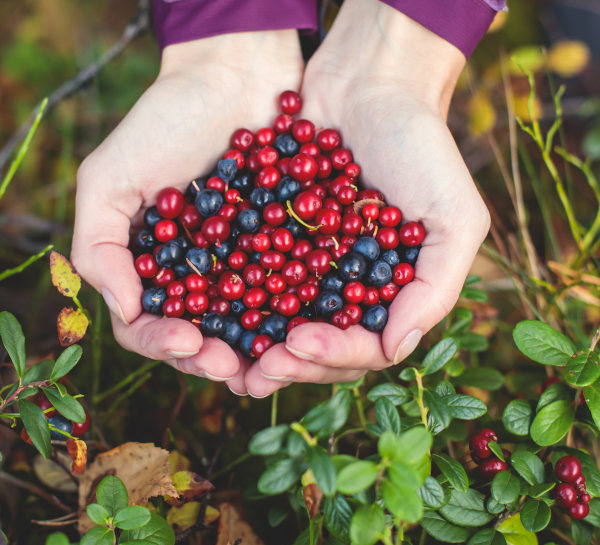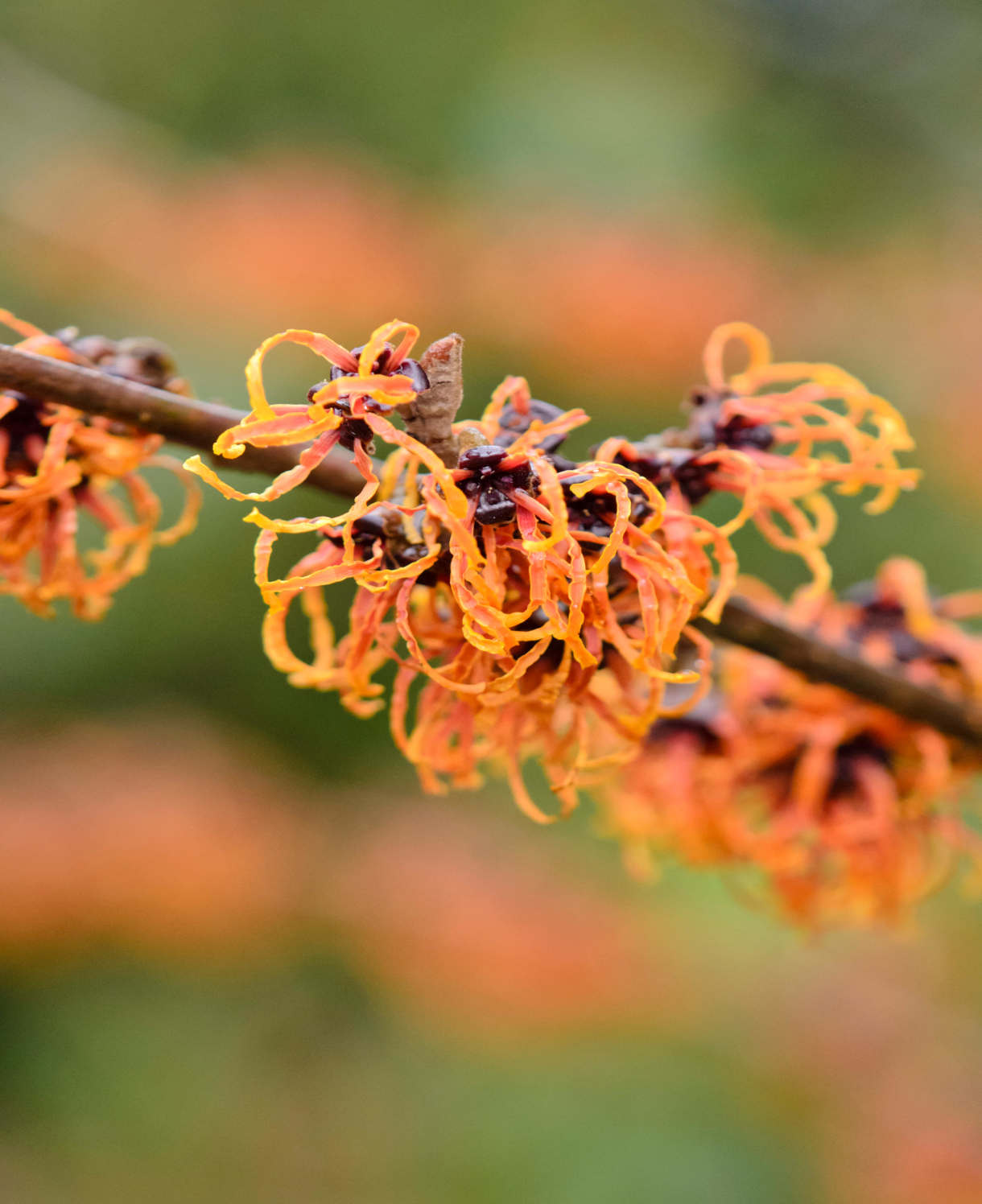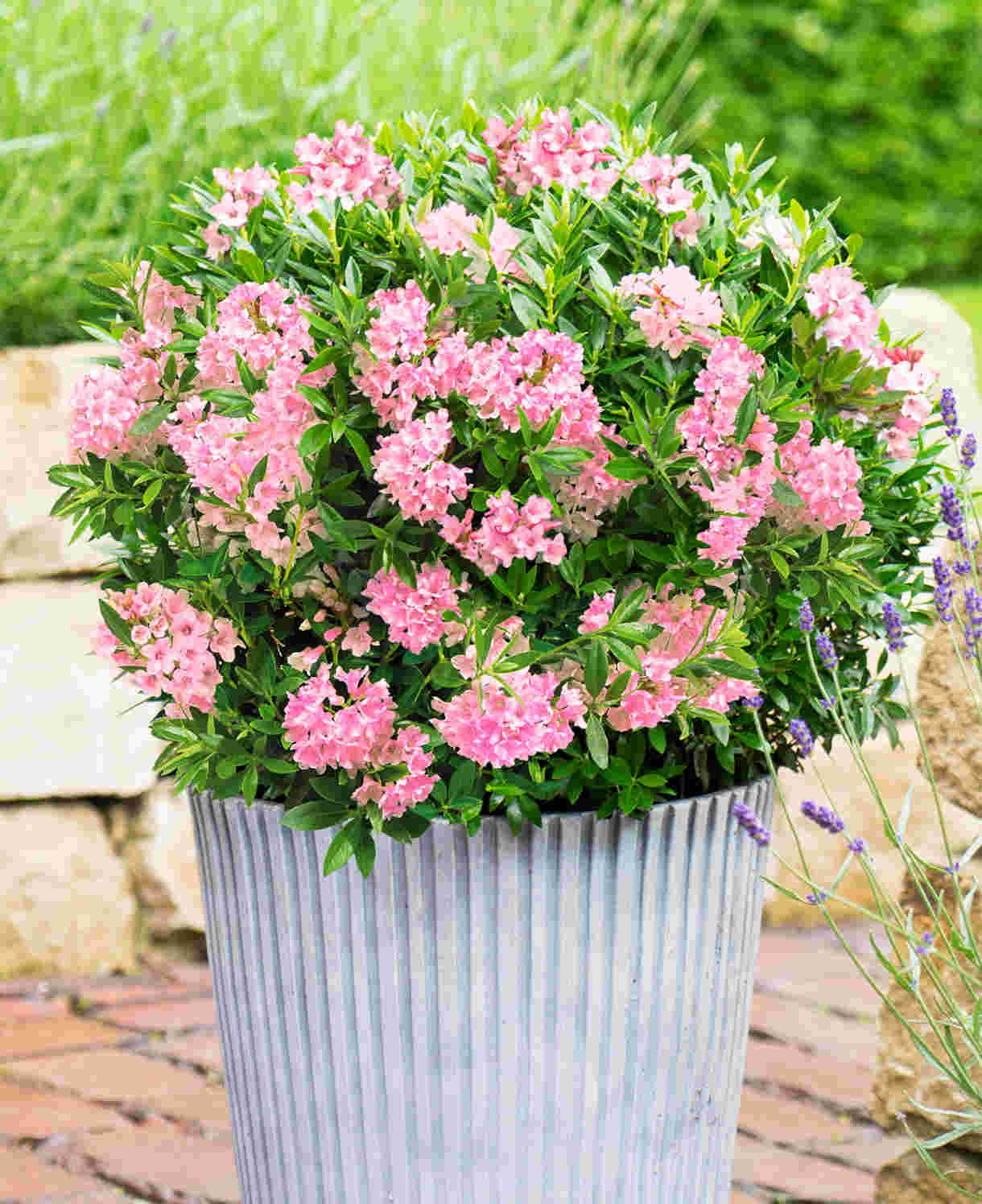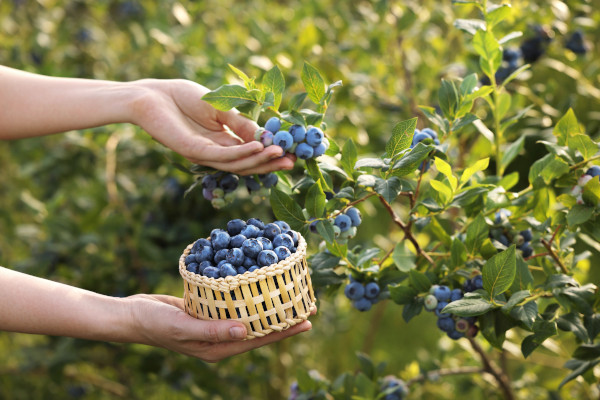How to grow Vaccinium
While there are many species of this acid-loving shrub, including very large ornamental forms, this growing guide will focus on the small to medium sized fruiting species commonly cultivated for their edible berries. Primarily, these are blueberries (Vaccinium corymbosum – deciduous and upright, and V. angustifolium var. laevifolium – deciduous and spreading), cranberries (V. macrocarpon – evergreen and mat-forming), and bilberries (V. myrtillus – deciduous and vigorously creeping).
Vaccinium are popular with gardeners as they offer that rare combination of both productivity and beauty. Early in the growing season they produce many small, bell-shaped flowers, followed by tasty and highly nutritious fruits, finishing with (for deciduous species at least) spectacular autumn colour.
The important thing to note is that this shrub requires acidic soil to thrive. If you can grow things like camellias, rhododendrons, and azaleas in your garden, this is a sign you have the right conditions. If your soil is more on the neutral to alkaline pH (soil testing kits are easily and cheaply available if you’re not sure), you’re better off growing your vaccinium in a container filled with ericaceous compost.
While many species and cultivars of vaccinium are self-fertile (meaning they can produce fruit without cross pollinating with another nearby plant), the biggest and best crops will always come when groups of two or more different varieties are planted together. When it comes to blueberries which can be early, mid, or late season croppers (see below), this also offers the opportunity to extend the fruiting season by several weeks.

Zantedeschia is a genus of flowering plants from the family Araceae and is native to southern Africa. With a rich history dating back to the Ancient Romans, these deciduous or semi-evergreen perennials have been used as a symbol of celebration. Zantedeschia was Named after Professor Giovanni Zantedeschia, an Italian botanist.
There are two main forms of Zantedeschia: hardy and tender. Hardy forms of the plant can be grown outdoors, enjoy moist soil and full sun or partially shaded conditions - these are known as Arum lilies. Tender forms of Zantedeschia prefer being grown in containers or pots and should be brought inside over the winter - these are known as Calla lilies.
With tuberous flora in all colours from whites, yellows and oranges to deep reds and purples, Zantedeschias are not to be overlooked in any garden, as long as they have sufficient sunlight to grow in.
Ready to learn more about growing Zantedeschia? Read on for all there is to know...

Key Information
Soil pH
Position
Hardiness


Where & when to plant Vaccinium
Position - The best crops are produced in full sun, though partial shade is also tolerated.
Soil - Acidic (4.5 – 5.5 pH), evenly moist, well-draining soil. Cranberries like it damper and are suited to boggy conditions.
Flowering Period - Blueberries: spring
Cranberries: summer
Bilberries: spring to summer
Hardiness - Hardiness throughout the genus can vary, though all species discussed in this growing guide are very hardy. Their rating is H6, meaning they’re capable of withstanding temperatures of -15°C to -20°C.
Horticultural divisions - Different varieties of blueberry crop at different times. Here is a handy, at a glance guide to a few of the most popular options;
Early croppers (July), ‘Duke’, ‘Dwarf Blue Sapphire’, ‘Earliblue’
Mid croppers (July – August), ‘Bluecrop’, ‘Pink Sapphire’, ‘Top Hat’, ‘Elliot’
Late croppers (August), ‘Aurora’, ‘Brigitta’, ‘Liberty’,
Vaccinium can be planted at any time of year, though settles in best when planted during the dormant period (from autumn to spring). Simply avoid days when the soil is frozen or very wet. If you plant during summer, avoid very hot, dry weather and be prepared for extra vigilance when it comes to watering during that first year.
For maximum cropping, plant blueberries in a sunny and open productive garden or in a container (all blueberry varieties can be grown in a container, though dwarf cultivars such as ‘Top Hat’ are especially well-suited to this). For northern gardens where the growing season is shorter, ‘Duke’ is a good choice as it flowers late but crops early.
To serve a more ornamental purpose, blueberries can also be used as a lower storey plant at the edge of a woodland garden.
Cranberries are ideal for forming evergreen groundcover in boggy, poorly drained soil such as in the area around a pond. Alternatively, grow in a container with a water-filled saucer underneath.
Bilberries are low, prostrate shrubs which spread vigorously via suckers. They are perfect for clothing slopes and banks or providing interesting ground cover in wildlife or informal gardens.
How to plant Vaccinium
- For planting in the ground, dig the soil area removing any large stones and weeds and breaking up any lumps. Mix in some organic matter with an acidic pH, such as ericaceous compost, composted pine needles, or leaf mould. Rake level and firm with your heels. Rake level again.
- Water plants well and allow to drain before planting.
- Dig a hole twice the size of the root-ball.
- Place the plant in the hole, ensuring the top of the root ball sits level with the surface of the soil.
- Backfill with soil and firm in gently with your foot.
- Soak well with water.
- Mulch around the base with ericaceous compost, composted pine needles, or leaf mould.
- For planting in containers, first choose an appropriately sized pot. The best practice is to start just a few centimetres larger than the rootball and increase in size every year or two. Always ensure there are plenty of drainage holes in the bottom.
- If you are using a large or heavy pot, it can be a good idea to fill and plant it in situ to save yourself the trouble of moving once full.
- Use a ericaceous compost with plenty of horticultural grit mixed in, and, if not already present in the compost (check the description on the bag) some slow-release ericaceous fertiliser granules.
- Start by partially filling the pot with compost; enough so that when placed on it the upper surface of the root ball is about 3cm lower than the top of the pot.
- Infill all the space surrounding the root ball with compost, firming down with your fingers then adding a little more so the plant is held tight.
- Pick up the pot (if you can!) and lightly tap on the potting bench or ground a few times to help further settle the compost around the plant.
- Soak well with water.
- A mulch with horticultural grit will look attractive and help to prevent a ‘cap’ or crust forming on the top of the compost (something container plants can suffer due to the artificial nature of their watering).

What to plant with Vaccinium
If you have the acidic conditions needed to grow vaccinium, a whole range of spectacular acid-loving garden plants is also at your fingertips for elsewhere in the garden. Camellia, hydrangea, enkianthus, physocarpus, hamamelis, clethra, and rhododendron are just a few trees and shrubs to get you started. For a lower storey of perennials at ground level, try lithodora, liriope, ophiopogon, and stokesia.



How to care for Vaccinium
Pruning and Deadheading
Bilberries fall into RHS pruning group 1, which means no pruning is required other than the occasional removing of dead, diseased, damaged, or badly placed growth. This is best done in spring after flowering.
For the first couple of years after planting, blueberries can be treated in the same way as bilberries. After this initial settling in period, a little extra attention is needed to encourage maximum flowering and fruiting.
In late February to early March, remove dead, diseased, damaged, or badly placed growth, shorten the thin, twiggy ends of stems to a lower, healthy, outward facing bud or branch, and take out up to a quarter of the oldest, thickest stems at ground level.
The aim is to create shrubs comprising of one third old stems, one third middle-aged stems, and one third young stems
Cranberries fall into the RHS pruning group 8, which means they are best left untouched apart from the occasional removal of dead, diseased, damaged, or badly placed branches. Do this after harvesting, in late autumn.
Watering
Vaccinium is a naturally thirsty plant and does best where soil moisture levels remain consistent. It’s therefore important to keep on top of regular watering throughout the growing season, especially during the first couple of years in the ground.
As for all acid-loving plants, rainwater from a butt is best as tap water can contain calcium which increases soil alkalinity over time (though is better than nothing if this is all you have available). Aim for consistently moist but not soggy soil/ compost, except when it comes to cranberries which are impossible to overwater. Keep a particular eye on vaccinium in open, sunny sites as these can dry out quickly, and bear in mind that container-grown vaccinium can need watering as often as every day during hot, dry weather.
From mid-autumn, the British climate tends to take over watering needs, though do remember to step in in the event of an unseasonably dry spell. Vaccinium will struggle if you allow it to dry out at any point.
One final point re. watering is the importance of an annual spring mulch (see next section), which can make a huge difference in locking moisture into the soil.
Feeding
To get it off to the best possible start, feed vaccinium during its first few years in the ground with a ericaceous feed applied to the surface of the soil and lightly worked in (known as a ‘top dress’). This is best done in late winter to early spring, followed by a mulch of acidic organic matter, i.e., a layer of ericaceous compost, composted pine needles, or leaf mould applied to the soil around the plant. This has the added benefit of suppressing weeds and locking in moisture. Avoid manure or mushroom compost, as these tend to have a more alkaline pH.
Once your vaccinium is well established, an annual mulch should provide sufficient nutrients, however, apply a top dress as above if ever you feel an extra boost is needed.
Container-grown plants rely even more on the gardener for nutrition. Start by making sure you use a good quality ericaceous compost, then from March to September apply an ericaceous liquid feed every two to four weeks.
Remember also to repot your vaccinium every few years, going up slightly in pot size and using fresh, ericaceous compost containing ericaceous feed. Once the plant reaches full size an annual top dress is advisable: each spring, scrape off the top 5cm of compost and replace with fresh, remembering to mix in a little ericaceous feed too.
Cold Protection
Most vaccinium are hardy enough to withstand winter in the UK without the need for additional protection. Having said this, the spring blossom can be damaged by a late frost, which then has knock on effects on fruiting later in the year. If a hard frost is forecast once your vaccinium has started flowering, either cover with one of these handy fleece jackets or a bedsheet, or move container-grown plants into a covered, protected environment.
Another thing to note is that, like all plants, when grown in a container vaccinium can be more susceptible to the cold. It can therefore be worth wrapping the base in hessian, fleece, or bubblewrap to insulate the roots, with the added benefit of protecting the pot from frost damage.
Pests and Diseases
Vaccinium tends to be trouble-free, however the fruits are very tasty to birds so it can be worth netting plants during the cropping period. Use a fine mesh to avoid birds becoming trapped inside.
How to propagate Vaccinium
Vaccinium can be propagated by cuttings (early summer for blueberries and bilberreis; mid to late summer for cranberries), however perhaps the easiest method is layering. Best done in spring or autumn, this simple and effective technique involves pegging a wounded stem to the ground to develop roots while still attached to the parent plant. It requires far less input than most other methods of propagation as the plant is largely left to do the work.
- Choose a few flexible outer shoots that can easily be bent down to the surface of the soil.
- Make a 5cm long incision where the stem will touch the ground, ensuring you slice through a leaf bud.
- Insert a matchstick to wedge the incision open slightly.
- Dig a small, shallow trench where the shoot will touch the ground (adding a little grit if the soil is heavy).
- Peg the shoot into the trench using thick wire or a strong forked twig.
- Fill with soil, firm in, and water.
- Mark the spot with a cane. Roots can take 12 months to form, making it easy to forget what you have done and where...!
- When a good root system has formed, sever from the parent plant and either replant elsewhere or put in a pot for growing on.
* Many plants carry Plant Breeders Rights and cannot be propagated for commercial purposes.
Common Vaccinium questions
- How long does it take for blueberry to bear fruit?
You can expect to be picking fruit from the first summer onwards. This will be in small quantities at first, gradually increasing until the plant reaches productive maturity at around year seven. By then, expect to be picking large crops of up to 5 kilograms. - Is it easy to grow blueberries?
Very much so. Providing you can offer acidic growing conditions and consistent moisture levels, blueberries are wonderfully low maintenance fruiting shrubs. - Do I need two blueberries bushes to get fruit?
Not always (some varieties are self-fertile), though best results will always come from growing a varied selection together.





